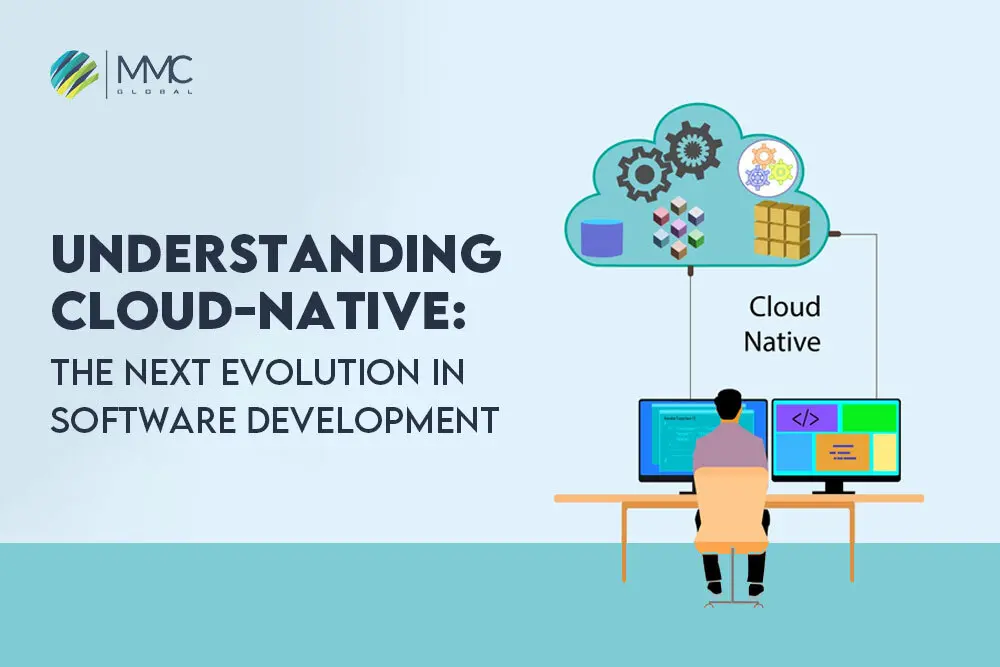Cloud Native applications are gaining popularity in the modern world of technology as businesses have realized their potential to increase agility and scalability. This blog will discuss cloud native applications, their benefits, as well as the steps required to build applications for your business.
In software development, the term “Cloud Native” is creating hype in application development companies. This approach is gaining popularity due to the benefits of scalability, reliability, and cost-effectiveness it offers. In this blog, we will explore a cloud native application and how to build a killer one for your business.

What is a Cloud Native Application?
A cloud native application is a software application designed specifically to run on cloud infrastructure, such as Amazon Web Services (AWS), Microsoft Azure, or Google Cloud Platform. Moreover, applications use microservices architecture, which means that the application can split into smaller components that are easier to manage and scale. In addition, these components are loosely coupled, allowing them to be updated and deployed independently.
This approach takes advantage of cloud computing’s benefits, such as elasticity, scalability, and availability. It also utilizes modern technologies, including microservices architecture, containerization, and DevOps. ensure that the application can be deployed and scaled quickly & efficiently.
Read More: DevOps Solutions: Role of DevOps in a Software Development Company
The Key Characteristics of a Cloud Native Application
There are four key characteristics of a cloud native application:
Microservices Architecture
A microservices architecture breaks an application into a set of small, independent services that can be developed, deployed, and scaled independently.
Containerization
Containerization allows an application to be packaged as a container. It can deploy and run consistently across different cloud environments.
DevOps
A DevOps approach focuses on automating the software delivery process, including development, testing, and deployment.
Cloud Infrastructure
It refers to the hardware and software components used to build and run cloud-native applications. Furthermore, this infrastructure provides the scalability, reliability, and availability needed to support modern cloud applications.
At MMCGBL, we have done almost 200+ projects based on cloud-native applications with the help of our developers. Our developers are highly qualified and experienced in building cloud-native applications from scratch. If you plan to do your next project, look no further because we are here to provide full assistance.
Benefits of Cloud Application Development
However, there are several benefits to building cloud-native applications. One of the main advantages is the ability to scale applications quickly and efficiently. Cloud-native applications help to handle large amounts of traffic to scale up or down as needed to meet demand. Additionally, cloud-native applications are fault-tolerant, which makes them able to continue to operate even if one or more components fail.
Another benefit of these applications is their ability to reduce costs. Businesses can avoid the capital costs associated with building and maintaining their own data centers by using cloud infrastructure.
- Scalability: Applications are highly scalable, which means they can easily handle a large number of users and traffic.
- Resiliency: Applications are designed to be resilient, which means they can quickly recover from failures.
- Agility: Cloud applications can be developed and deployed quickly. It further allows businesses to respond to changing market conditions and customer demands.
- Cost-Effective: Native applications are cost-effective in terms of cutting down resources. It uses cloud computing infrastructure, eliminating the need for on-premises hardware.
- Security: Cloud-native applications are more secure because they provide modern security practices such as zero-trust security and identity as well as access management.
Construct a Killer Cloud-Native Application For Your Business
Building a killer cloud-native application requires a systematic approach. Here are the steps you can follow:
Define Your Goals
The first step in building a killer cloud-native application is to define your goals. Such as what you want to achieve with your application. What problem are you trying to solve? Who is your target audience? Defining your goals will help you determine the features and functionality of your application.
Choose the Right Technology Stack
The next step is to choose the right technology stack for your application. It includes the programming language, framework, and tools you will use to build your application. Moreover, you should select technologies optimized for the cloud and have strong community support.
Choose the Right Cloud Platform
Choose a cloud platform that meets your scalability, reliability, and cost requirements. AWS, Azure, and Google Cloud are some popular cloud platforms that offer a range of services that can help you build cloud-native applications.
Use a Microservices Architecture
A microservices architecture is essential to building a native application. Adopting a microservices architecture will make your application highly scalable and resilient. Moreover, it allows you to break down your application into small, independent services that can be developed, deployed, and scaled independently.
Use Containers and Kubernetes
Containers and Kubernetes are key technologies in building cloud-native applications. Containers are lightweight, portable, and self-contained units of software. It can easily deploy and scale in any ecosystem. In addition, Kubernetes is an open-source container orchestration platform that automates containerized applications’ deployment, scaling, and management.
Automate Your Software Delivery Process
Adopt a DevOps approach to automate your software delivery process, including development, testing, and deployment. Use tools like Jenkins, GitLab, or CircleCI to automate your software delivery process.
Build for Resilience
Build your application with resilience in mind. Use fault-tolerant architectures, auto-scaling, and load balancing to ensure that your application can withstand failure and handle high traffic.
Monitor and Optimize
Monitor your application to ensure it’s performing well. Use tools like Prometheus and Grafana to monitor your application’s performance and optimize it for maximum efficiency.
Conclusion
Cloud application requires a systematic approach that involves choosing the right cloud platform, using a microservices architecture, containerizing your application, automating your software delivery process, building resilience, and monitoring and optimizing your application. By following these steps, you can create a native application that’s scalable, reliable, and cost-effective and that can help your business succeed in the digital age.

